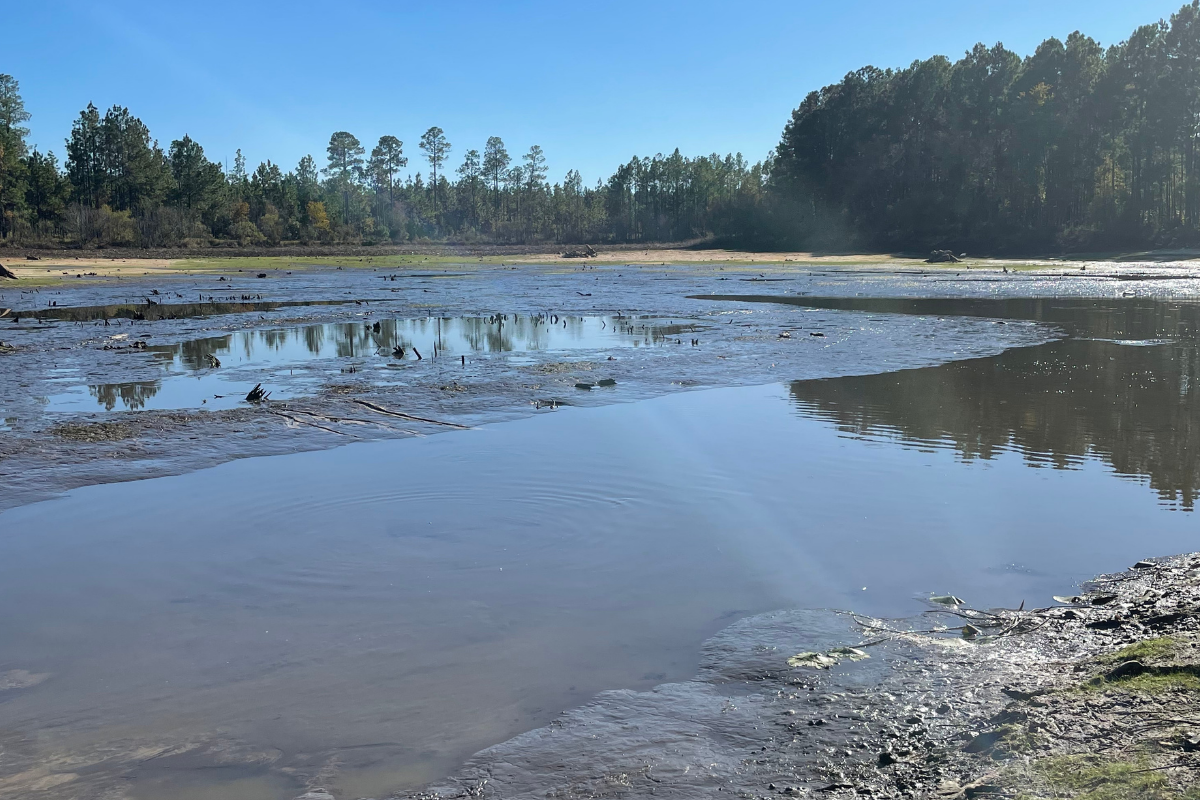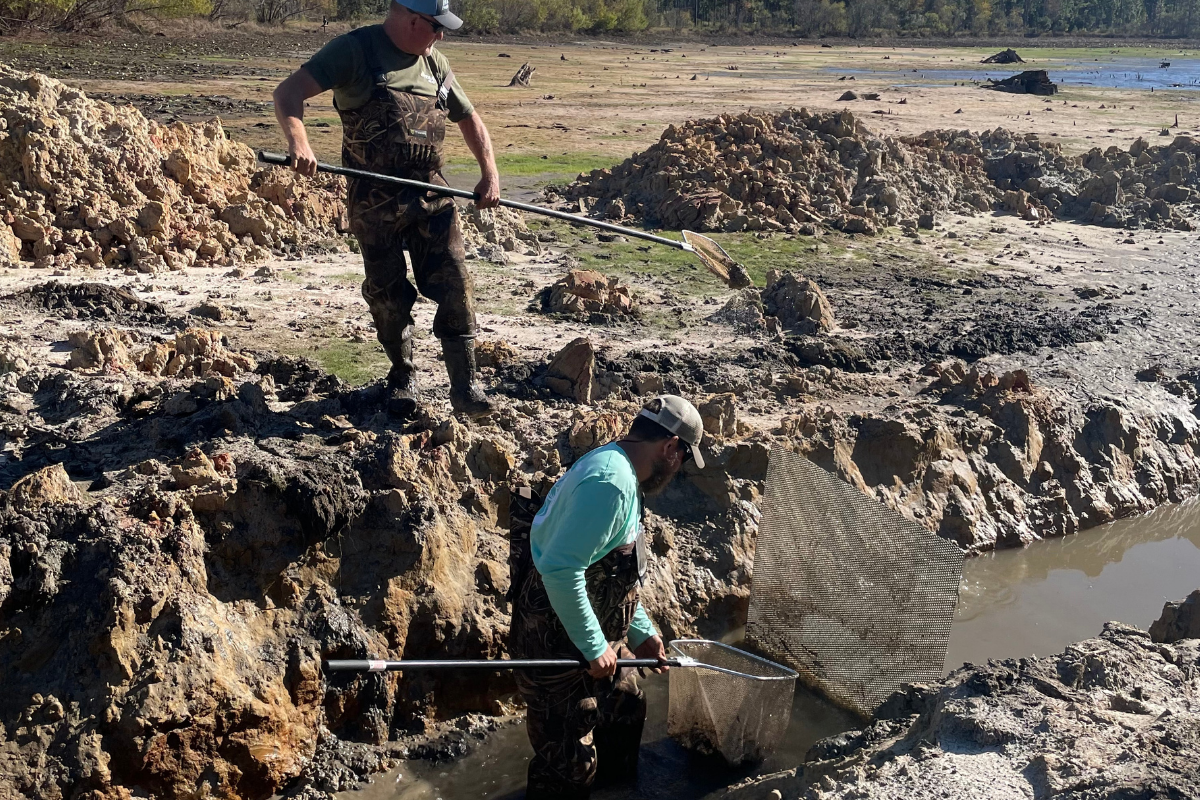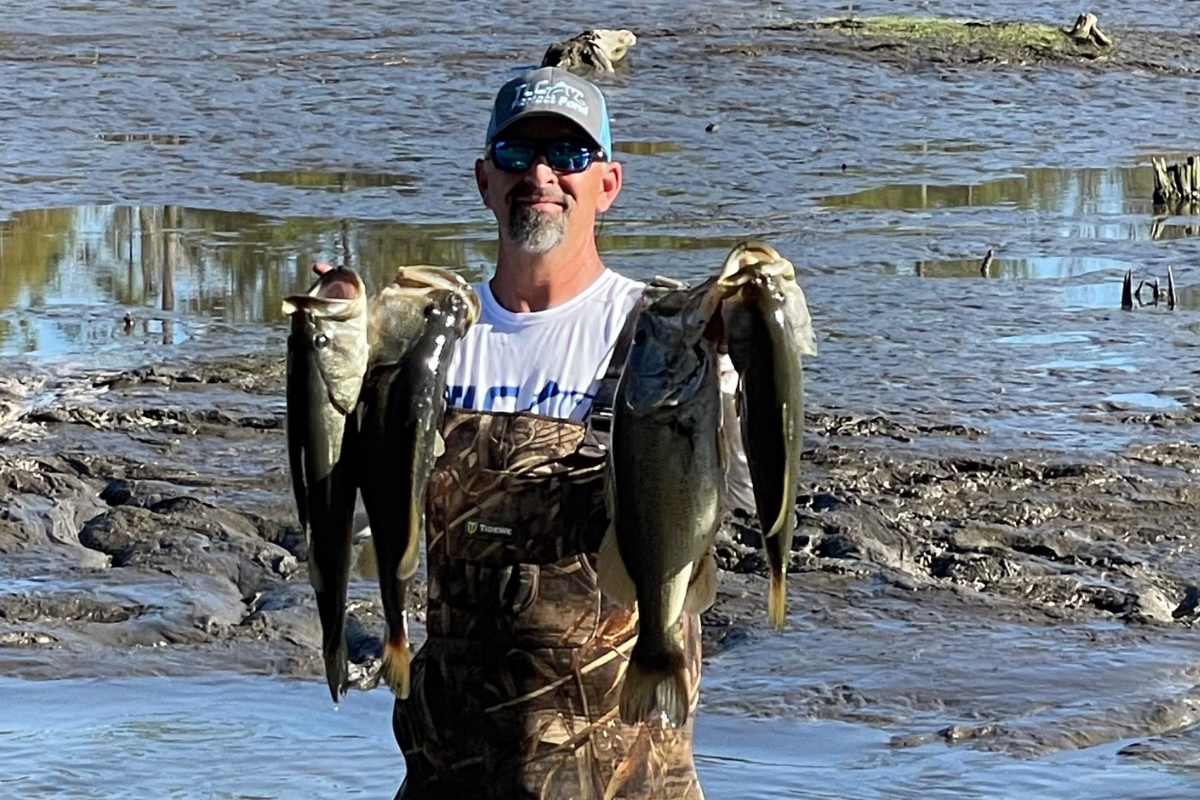We have a customer who wants us to perform a complete pond restoration on an 8 acre pond with an underperforming fishery. This project will take several years to complete, but we want to take you through the entire process to show you how we transform a pond into a productive, long-term fishery with abundant populations of sunfish and largemouth bass.
We performed an electrofishing survey on this pond a couple years ago and found that the bluegill population was insufficient. In addition, the bluegill we did catch had low relative weights and were not considered healthy. The bass population was lacking as well, with low relative weights and a low relative abundance for an 8 acre pond.
One of the primary issues in this pond was an overgrowth of vegetation, particularly water lilies. Almost half of the water surface was covered with water lilies when we started assessing the problems in this pond. As mentioned above, the prey populations (sunfish) for largemouth bass were not abundant. But that problem was exacerbated by the excessive vegetation. The bass in the pond were having to work too hard to find prey, and not gaining any weight as a result.

Vegetation Issues on Shallow Banks
We sprayed the lilies once and were able to significantly improve the issue. However, they would need repeated treatments every year due to the topography of the pond. This particular pond has shallow banks around the entire perimeter. These shallow banks include water depths of 3-4′ that don’t sharply deepen at any point.
Shallow banks on a pond are notorious for causing prolonged vegetation issues. While some vegetation is a good thing, excessive vegetation can have impacts on the fish populations and the recreational quality of a pond. In any pond we manage, our goal is to have the surface vegetation occupy no more than 20% of the total area of the pond.
Deeper banks will naturally have fewer vegetation issues due to light penetration and root length. If the water along the banks is deep enough, lily pads are not able to produce roots long enough for those depths. In addition, steeper banks will prevent light from reaching the bottom of the pond, reducing the presence of any subsurface vegetation.

Our Complete Pond Restoration Plan
Our general goal in this 8 acre complete pond restoration is to create a productive bluegill and largemouth bass fishery while minimizing any overabundance of vegetation. We will do this through several steps:
1. Drain the pond completely and collect the fish that were in it.
2. Steepen the banks of the pond and remove a majority of the sand that’s currently in the bottom of the pond.
3. Fill the pond with water using a nearby deep well.
4. Test and adjust the water to ensure that the alkalinity, pH, and other important water quality metrics are correct.
5. Stock with bluegill to establish a healthy, abundant prey population for largemouth bass.
6. Stock with hybrid largemouth bass once the bluegill population has spawned and established.

Step #1 – Draining the Pond and Collecting the Fish
We needed to drain the pond completely so the excavator and other heavy equipment could be use to remove dirt and steepen the banks. To facilitate the drainage, we dug a canal so that the water would feed to a hole we dug along the bank of the pond. This would help it drain faster and make it easier to catch the fish that were left in the pond.
We used a couple screens along the canal to ensure the fish weren’t pumped from the pond into the nearby creek. Once the water was getting relatively low, we were able to walk around the shallow waters of the pond and catch a majority of the fish that were left.
The fish we caught confirmed what we had seen in the prior electrofishing survey. The sunfish populations were very skinny and the majority of the bass had low relative weights. We did catch a few bass in the 5-9 lb range, but the majority of them were undersized for their length.
Click the video below to see us draining the pond and collecting the fish for consumption. Be sure to SUBSCRIBE to our YouTube channel and click the bell notification button so that you’re notified each time we publish a new video. Stay tuned for more updates on this complete pond restoration project as we complete them.

